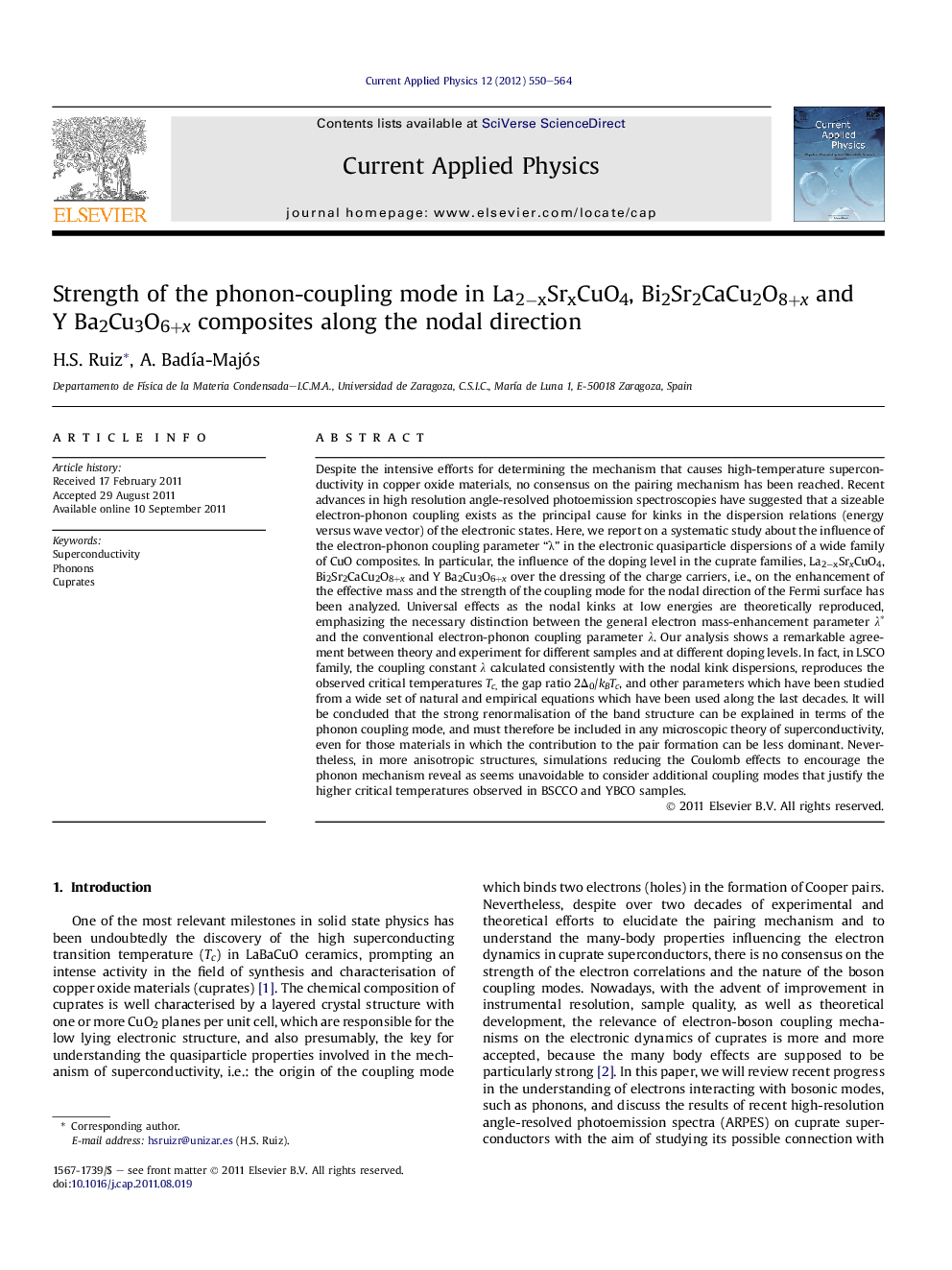| کد مقاله | کد نشریه | سال انتشار | مقاله انگلیسی | نسخه تمام متن |
|---|---|---|---|---|
| 1787090 | 1023430 | 2012 | 15 صفحه PDF | دانلود رایگان |

Despite the intensive efforts for determining the mechanism that causes high-temperature superconductivity in copper oxide materials, no consensus on the pairing mechanism has been reached. Recent advances in high resolution angle-resolved photoemission spectroscopies have suggested that a sizeable electron-phonon coupling exists as the principal cause for kinks in the dispersion relations (energy versus wave vector) of the electronic states. Here, we report on a systematic study about the influence of the electron-phonon coupling parameter “λ” in the electronic quasiparticle dispersions of a wide family of CuO composites. In particular, the influence of the doping level in the cuprate families, La2−xSrxCuO4, Bi2Sr2CaCu2O8+x and Y Ba2Cu3O6+x over the dressing of the charge carriers, i.e., on the enhancement of the effective mass and the strength of the coupling mode for the nodal direction of the Fermi surface has been analyzed. Universal effects as the nodal kinks at low energies are theoretically reproduced, emphasizing the necessary distinction between the general electron mass-enhancement parameter λ∗ and the conventional electron-phonon coupling parameter λ. Our analysis shows a remarkable agreement between theory and experiment for different samples and at different doping levels. In fact, in LSCO family, the coupling constant λ calculated consistently with the nodal kink dispersions, reproduces the observed critical temperatures Tc, the gap ratio 2Δ0/kBTc, and other parameters which have been studied from a wide set of natural and empirical equations which have been used along the last decades. It will be concluded that the strong renormalisation of the band structure can be explained in terms of the phonon coupling mode, and must therefore be included in any microscopic theory of superconductivity, even for those materials in which the contribution to the pair formation can be less dominant. Nevertheless, in more anisotropic structures, simulations reducing the Coulomb effects to encourage the phonon mechanism reveal as seems unavoidable to consider additional coupling modes that justify the higher critical temperatures observed in BSCCO and YBCO samples.
► Universal nodal kink effect at low energies for cuprate families has been explained.
► Different roles for the electron mass-enhancement and the e-ph coupling parameters.
► Dressing of the charge carriers in the nodal direction of the Fermi surface.
► Electron-phonon coupling contribution to the pair formation mechanism.
► Influence of the Coulomb effects on the superconducting critical temperatures.
Journal: Current Applied Physics - Volume 12, Issue 2, March 2012, Pages 550–564